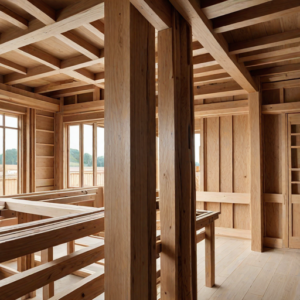Joinery is the art and ability to make strong and lasting connections between pieces of wood through specialized strategies. Unlike general carpentry, which features a broader scope of tasks, joinery focuses particularly on the complex shaping and joining of wood to create joints that are both structurally sound and visually appealing. This craftsmanship is critical in numerous woodworking disciplines, including fixture making, cabinetry, and architectural woodworking.
Joinery represents the top of woodworking talent and craftsmanship, where precision and artistry converge to create enduring connections and excellent finishes in woodwork. By studying techniques like dovetail, mortise, tenon, and tongue-and-groove joints, joiners ensure that each piece meets functional necessities and embodies wood’s beauty and energy. Whether crafting fixtures, constructing buildings or restoring historical structures, joinery is a necessary art form that celebrates wood’s seal splendor and versatility.
Understanding joinery isn’t pretty much a technique; it is approximately appreciating the willpower and information that raise woodworking to an art shape.

The time period “joinery” originates from the act of becoming a member of or fitting portions of wood together. It emphasizes the meticulous craftsmanship and precision required to create seamless joints without using nails or screws. Joiners gain this via techniques that have been subtle over centuries, frequently incorporating dovetail joints, mortise and tenon joints, and tongue and groove joints, amongst others. These methods no longer handiest decorate the energy and sturdiness of wood structures; however, they also contribute to their aesthetic beauty.
Joinery plays a vital function in construction for several motives:

Several essential techniques define the artwork of joinery:
Joinery is named after the specialized techniques used to join timber pieces seamlessly. These techniques emphasize craftsmanship and precision, creating strong and aesthetically pleasing connections without using mechanical fasteners.
Joiners use a variety of tools, including hand saws, chisels, planes, and drills. They also utilize specialized woodworking machinery, such as routers and biscuit joiners, to achieve precise cuts and fits and ensure the highest quality in their work.
Traditional joinery techniques offer superior strength, durability, and aesthetic appeal compared to modern methods that use metal fasteners. They also allow for easier repairs and restoration, preserving the longevity of wooden structures and components. This approach not only enhances the beauty of the finished product but also ensures its sustainability and resilience over time.
While joinery is primarily associated with woodworking, its principles and techniques are also applied in various fields, including construction, cabinetry, furniture making, and specialized crafts such as boat building. This versatility highlights joinery skills and widespread applicability across different industries.
Learning joinery techniques can be achieved through various means, such as enrolling in woodworking courses, apprenticeships, or vocational training programs. Additionally, many resources are available online, including instructional videos, tutorials, and forums where experienced joiners share their knowledge and expertise. Practicing regularly and seeking guidance from skilled professionals can significantly enhance one’s proficiency in joinery.